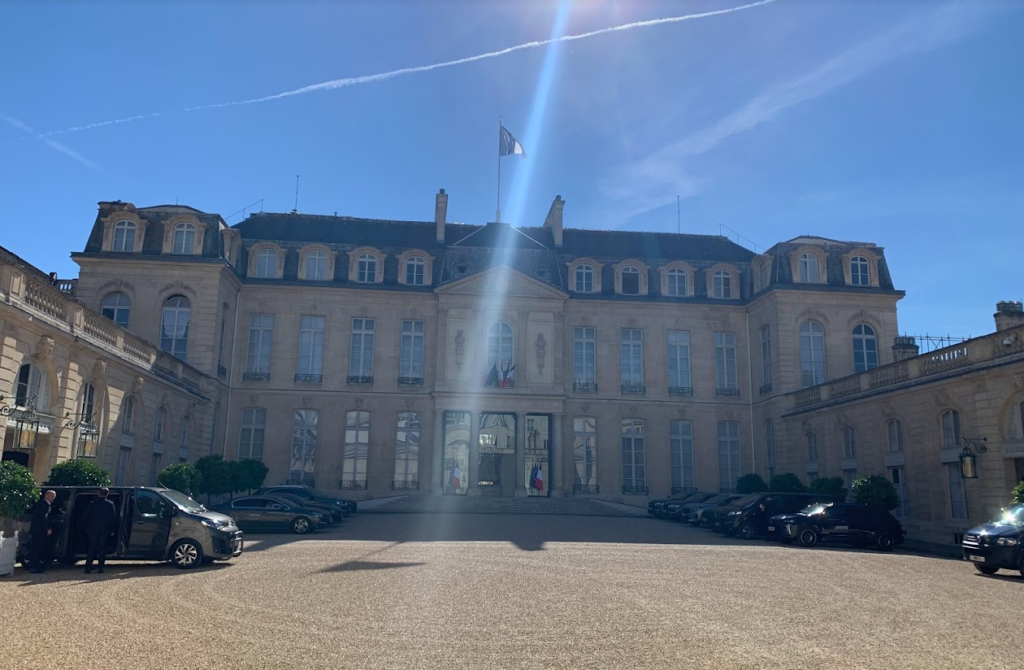Paris is the home to the nation’s most significant state institutions. These historic edifices not only serve as the epicenters of governance but also stand as enduring symbols of the Republic’s values and heritage. Beyond their administrative functions, many of these landmarks open their doors to the public, offering a unique glimpse into the inner workings of French democracy and its rich historical tapestry.
1. The Élysée Palace – Residence of the Presidency of the Republic
The Élysée Palace, located at 55 Rue du Faubourg-Saint-Honoré in the 8th arrondissement, serves as the official residence of the President of the Republic Emmanuel Macron. This site, witness to numerous pivotal decisions, symbolizes the supreme executive power. The palace is generally closed to the public; however, it opens its doors during the European Heritage Days, which typically occur in September. During this event, visitors have the rare opportunity to tour the premises.

2. Hôtel de Matignon – Seat of the Prime Minister’s Office
Not far away, at 57 Rue de Varenne in the 7th arrondissement, stands the Hôtel de Matignon, housing the Prime Minister Michel Barnier and certain ministers. This building, with its gardens and elegant architecture, is the stage for governmental deliberations. Similar to the Élysée Palace, the Hôtel de Matignon is not regularly open to the public but participates in the European Heritage Days, allowing visitors to explore its historic rooms and gardens during this annual event.

3. Palais Bourbon – Home of the National Assembly
The National Assembly, where deputies convene, is situated in the Palais Bourbon at 126 Rue de l’Université in the 7th arrondissement. This neoclassical palace is the venue for debates and votes that shape French legislation. The National Assembly offers guided tours to the public, typically available on select days when parliamentary sessions are not in progress. Advance reservations are usually required, and visitors can gain insights into the legislative process and the building’s rich history.

4. Luxembourg Palace – Seat of the Senate
The Senate, representing local authorities, meets in the Luxembourg Palace at 15 Rue de Vaugirard in the 6th arrondissement. Surrounded by its renowned gardens, this palace is a haven for legislative reflection. The Senate also offers guided tours, primarily on Mondays and Fridays, subject to the parliamentary calendar. Visitors can explore the historic chambers and learn about the Senate’s role in the French legislative system.

5. Palais-Royal – Housing the Constitutional Council and the Council of State
The Constitutional Council, guardian of the constitutionality of laws, sits in the Palais-Royal at 2 Rue de Montpensier in the 1st arrondissement. This same palace also houses the Council of State, advisor to the government and supreme administrative court. While the inner workings of these institutions are not generally open to the public, the Palais-Royal itself, with its courtyards and gardens, is accessible and offers a glimpse into France’s judicial heritage.

6. Palais de Justice – Location of the Court of Cassation
The Court of Cassation, the highest court in the judicial order, is located in the Palais de Justice on the Île de la Cité in the 1st arrondissement. This emblematic site is the sanctuary of the ultimate interpretation of French law. Parts of the Palais de Justice, including the historic Sainte-Chapelle, are open to visitors. However, access to the courtrooms may be restricted, and it’s advisable to check in advance for any available public tours.

7. Palais d’Iéna – Headquarters of the Economic, Social and Environmental Council
Lastly, the Economic, Social and Environmental Council, the third constitutional assembly, is headquartered in the Palais d’Iéna at 9 Place d’Iéna in the 16th arrondissement. This consultative institution provides a voice to the nation’s active forces. The Palais d’Iéna occasionally hosts public events and exhibitions, and during such times, visitors can access certain areas of the building. Information about upcoming events is typically available on the council’s official website.

While some of these institutions have limited regular public access due to their official functions, special events like the European Heritage Days provide unique opportunities to explore these historic sites. It’s recommended to consult the official websites of each institution or contact them directly for the most current information regarding public visits and tours.

